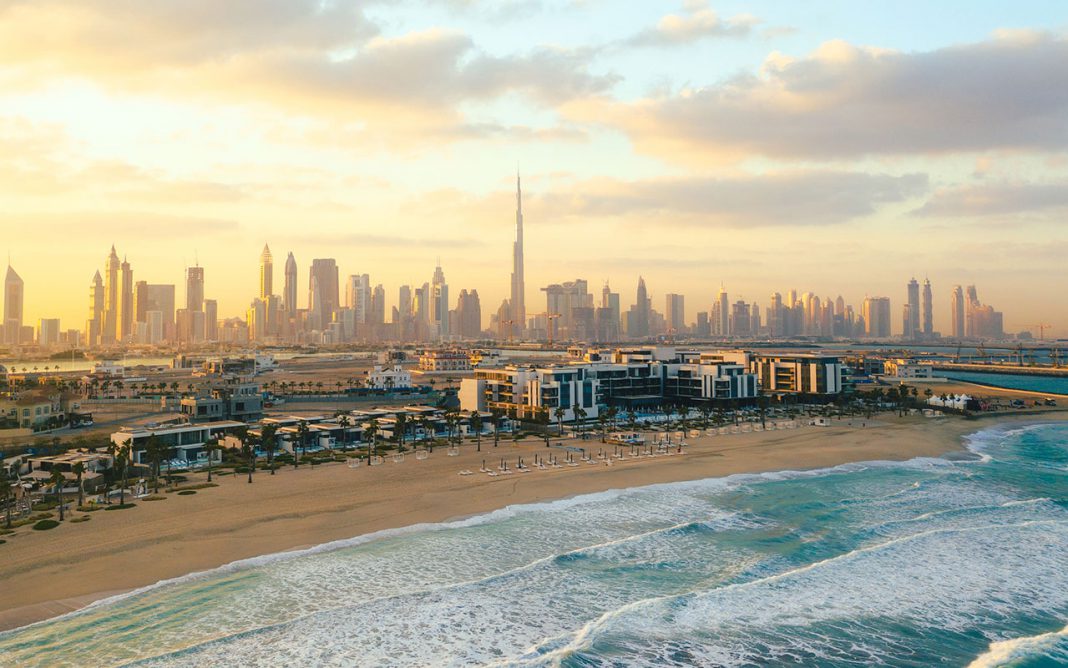Global vaccination drive has underpinned the start of the recovery in travel and tourism sector. Whilst occupancy rates in UAE for the first six months still sit below 2019 levels, when considering the shortfall in international tourism, declines in occupancy rates have been less stark, according to real estate industry expert CBRE.
Data from the UAE’s Federal Competitiveness and Statistics Authority shows the scale of the impact the pandemic has had on economic activity. As a result of the restrictions on economic and social activity and a global economic downturn, the UAE’s GDP fell by 6.1 per cent in 2020.
Given the decline in economic activity, it was no surprise that we have also seen a marked decrease in employment levels, with total employment estimated to have fallen by as much as 8.5 per cent according to data from Oxford Economics.
However, given the effectiveness of the lockdown measures enacted by the UAE government, the actual decline may have been less severe. Data from the Ministry of Human Resources and Emiratisation estimates that employment – where employment registered with the ministry in 2019 was estimated to account for almost 73 per cent of total employment – fell by 5.9 per cent.
Whilst the three largest occupational sectors – craft and related trade, elementary occupations, and services and sales – saw the most significant declines in employment, in most parts this is likely to be frictional, rather than a long-term structural loss in employment.
More so, technical, professional and managerial occupation employees almost all saw an increase in total employment levels, which due to their relative earnings and purchasing potential compared to the aforementioned occupations will bode well for consumption.
Looking ahead, the IMF and the UAE Central Bank forecast that the UAE’s GDP is expected to grow in 2021 by 1.6 per cent and 2.4 per cent respectively.
Whilst these growth forecasts have a considerable range, continuing improvement in activity in the non-oil sector, the recent uplift in oil output production cuts, which will aid the oil sector, both backed by stronger global growth, means that it will likely see the realised growth rate sit towards the higher end of the range, stated CBRE in its UAE Market Review Q2 2021.
According to the property expert, international visitation is still someway off its pre-covid levels, with the latest year-to-date data from UN World Tourism Organization showing that total international arrivals stand 85.4 per cent below its 2019 levels.
Whilst these trends are also evident in the UAE, it has seen relative outperformance compared to the global average. In the first half of 2021, total passenger traffic at Dubai International Airport stood 76.2 per cent below the same period in 2019.
In 2020, the global number of average daily flights fell by 41.5 per cent compared to 2019, to an average of 67,223 flights per day.
Whilst citywide occupancy rates still sit below 2019 levels, when considering the shortfall in international tourism, declines in occupancy rates have been less stark, stated CBRE in its report.
In the year-to-date to June 2021, compared to the same period in 2019, occupancy rates are between 7.4 and 14.4 percentage points lower, this points to the relative resilience of the UAE’s hospitality sector.
Over this period, Fujairah was the only location to register an increase in occupancy, with occupancy increasing marginally by 0.4 percentage points, it added.


